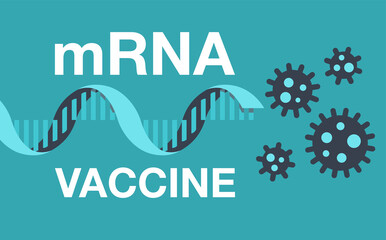Key Takeaways
The Centre for Cellular and Molecular Biology (CCMB) here has established the “proof of principle” of the first indigenous mRNA vaccine technology coming from a scientific institution in India, Vinay K. Nandicoori, Director of the Council of Scientific and Industrial Research institute
It is based on the Moderna model, but has been built with the information available in the open and our own technology and materials.
“The anti-spike antibodies generated were found to be more than 90% efficient in preventing the human ACE2 receptor binding to the coronavirus
The home-grown mRNA vaccine platform holds promise to deal with other infectious diseases such as TB, dengue, malaria, chikungunya, rare genetic diseases and others
About mRNA
- Messenger RNA (mRNA) is a single-stranded RNA molecule that is complementary to one of the DNA strands of a gene.
- The mRNA is an RNA version of the gene that leaves the cell nucleus and moves to the cytoplasm where proteins are made.
- During protein synthesis, an organelle called a ribosome moves along the mRNA, reads its base sequence, and uses the genetic code to translate each three-base triplet, or codon, into its corresponding amino acid.
What are mRNA Vaccines?
- Vaccines help prepare the body to fight foreign invaders (pathogens such as bacteria or viruses), to prevent infection.
- All vaccines introduced into the body a harmless piece of a particular bacteria or virus, triggering an immune response.
- Most vaccines contain a weakened or dead bacteria or virus.
- However, scientists have developed a new type of vaccine that uses a molecule called messenger RNA (or mRNA for short) rather than part of an actual bacteria or virus.
How does a mRNA vaccine work?
- Previous vaccines have been based on the fact that they contain an antigen as an active substance. The antigen could be a part of a certain virus
- The mRNA vaccine does not contain antigen; instead, the body itself forms the active substance under the influence of the mRNA vaccine.
- The mRNA vaccine contains a transmitter mRNA that causes muscle cells at the vaccine site to produce the active substance.
Where does the mRNA contained in the vaccine come from?
- The mRNA contained in the vaccines is produced synthetically in laboratories.
- No animal or human cells are needed for the production.
What does a mRNA coronavirus vaccine contain?
- The vaccine does not contain the SARS-CoV-2 – virus that causes coronavirus disease or even parts of that virus.
- Instead, the vaccine contains transmitter RNA, which instructs the body to produce coronavirus surface protein, also known as spike protein.
- The vaccine also contains water, salts, sugars, and lipids (fats). In the vaccine, the mRNA is placed inside a tiny lipid particle that helps to deliver it to a muscle cell.
Can the mRNA contained in the vaccine remain in the DNA of human cells?
- Because it is RNA, it cannot integrate into the DNA of the vaccinated cell.
- In other words, a mRNA vaccine cannot change human DNA. In addition, the RNA contained in the vaccine is quickly broken down in the body.
Why have mRNA vaccines been developed and why was new technology necessary?
- The mRNA vaccines were invented already in the 1990s.
- However, the first vaccine trials, or vaccines under development, did not induce human immunity sufficiently.
- The usability of vaccines improved considerably after the mRNA was able to be packed inside a lipid particle. Within the lipid particle, the mRNA can move into a cell without being destroyed before it.
- The more advanced versions of mRNA vaccines, previous experience with pandemics caused by a virus and especially the Ebola epidemics in Africa accelerated the development of the mRNA technology.
- A new way to deliver a messenger RNA into a cell and to use the human body to produce the active substance, i.eThe antigen, have shortened the time needed to develop vaccines.
What are the advantages over other vaccine strategies?
- Safety:
- mRNA is non-infectious and poses no concern for DNA integration—mainly because it cannot enter the nucleus which contains DNA.
- mRNA is made through a cell-independent process and does not require inactivation; thus, it poses no safety concerns due to contamination with toxic agents.
- Efficacy:
- mRNA is rapidly degraded in the body, and cells don’t readily take up foreign mRNA.
- Recent technology has modified the mRNA molecule to make it more stable and packaged the molecules in fats (called lipids), increasing cell delivery efficiency.
- These advances increase the amount of spike protein produced on your cells, thereby stimulating a more effective immune response.
- Production:
- mRNA can be quickly designed and scaled up, if necessary.
- The manufacturing is sequence-independent, which makes it highly adaptable to different pathogens.
- The cost is also lower than other platforms and will continue to decrease as the technology expands
Content Source: The Hindu



